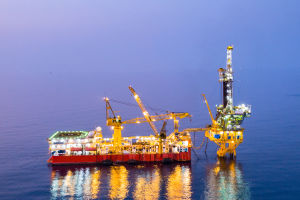Wind power, as a form of renewable energy, has gradually become an important part of the transformation of the global energy structure.
Wind power harnesses wind energy to generate electricity.
The core of the process is to drive the wind turbine blades to rotate, which in turn drives the generator to produce electricity.
In recent years, with the advancement of technology and the increasing demand for environmental protection, wind power generation has received widespread attention and application, becoming an important means to achieve sustainable development.
The basic principles of wind power are simple. The blades of a wind turbine rotate due to the force of the wind, and this rotational motion is converted into electrical energy through a mechanical transmission system. The design of a wind turbine typically includes main parts such as the tower, nacelle, and blades.
The tower supports the entire wind turbine, and the generator inside the nacelle converts rotational kinetic energy into electricity. The shape and material of the wind turbine blades are key factors that affect power generation efficiency.
Blades are usually made of lightweight yet high-strength materials, such as fiberglass or carbon fiber, to reduce wind resistance and increase the efficiency of wind energy conversion.
Wind power has many significant advantages. First, it is a completely renewable form of energy, and wind is an ever-present resource in nature.
Compared with traditional fossil fuels, wind power produces almost no pollutants and, therefore, has clear advantages in reducing greenhouse gas emissions. Additionally, wind power can reduce dependence on fossil fuels, thereby enhancing the security of energy supply.
However, wind power also faces some challenges. A major problem is the volatility of wind speeds, which can lead to instability in power output. To combat this, many wind farms use a combination of energy storage and smart grid technology to balance power supply and demand.
Moreover, the investment in wind power equipment and infrastructure is relatively large, and the cost of construction and maintenance is high.
In particular, in areas with lower wind power potential, the economics of wind power may not be as favorable as expected. In these locations, wind power may need to be combined with other forms of energy.
Technological progress has brought new opportunities for the development of wind power. For example, modern wind turbine designs are becoming increasingly efficient, with large turbines able to produce considerable amounts of electricity even at low wind speeds.
The emergence of floating wind turbines makes it possible to develop deep-sea wind resources, further broadening the application of wind power.
In addition, digital technology and data analysis are also helping to optimize the operation and maintenance of wind power generation, improving overall economic viability and reliability.
The development of wind power not only relies on technological breakthroughs but also requires policy support and social recognition. Many countries and regions have formulated policies to encourage the development of renewable energy, including financial subsidies, tax incentives, and green certificates.
These policies can reduce the initial investment costs of wind power generation and enhance its market competitiveness. At the same time, increasing social awareness of environmental protection has promoted the demand for clean energy such as wind power.
As a green and renewable energy form, wind power is developing rapidly worldwide. Not only does it help reduce greenhouse gas emissions and air pollution, but it also enhances the stability of energy supply.
Despite some challenges, such as wind speed fluctuations and high investment costs, the prospects for wind power generation remain bright as technology advances and policy support increases.
In the future, wind power is expected to play an increasingly important role in the global energy transformation and become a significant force in achieving sustainable development.


